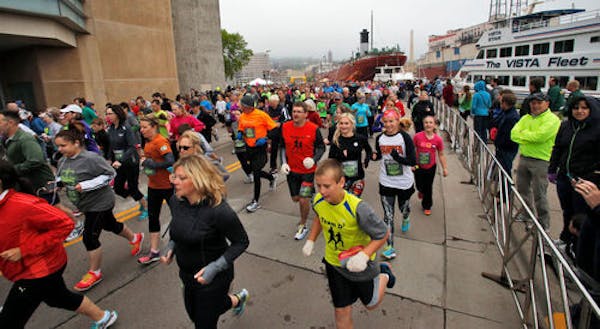Camping, like so many activities outdoors during the stress of the pandemic, has new followers. Don't let a Midwestern winter cool the enthusiasm.
Outdoor guides and experts acknowledge the obvious: The idea of winter camping is intimidating at first blush. Icy landscapes and low-lit days don't inspire warm thoughts for getting out. But there are ways to adapt gear and skills for any season. To make winter (or early spring) work.
General camping principles still apply, said Mollie Thompson, who supervises REI's outdoors programs in the metro area, from basic skills courses to moonlit snowshoe tours and fatbiking. Winter camping, too, starts with safety, hydration and nutrition, and proper gear for the conditions.
"It's not scary nor very difficult," said Thompson, who made the leap to winter camping after becoming a guide. "It just takes some adaptations."
Those adaptations are mental, too, said Tom Watson, a guidebook writer and all-around Minnesota outdoorsman. Watson got his first taste of winter camping as a teen in the Boy Scouts. And while gear at the time was crude — tarps for tents, cheap sleeping bags, and not a self-inflating air mattress in sight — doing so helped build skills and, most important, breach mental obstacles. Today, comfort in the cold isn't a stretch.
"This doesn't have to be Shackleton," said Watson, referring to the early 20th century British explorer Ernest, who with his shipmates famously endured an Antarctica expedition gone wrong.
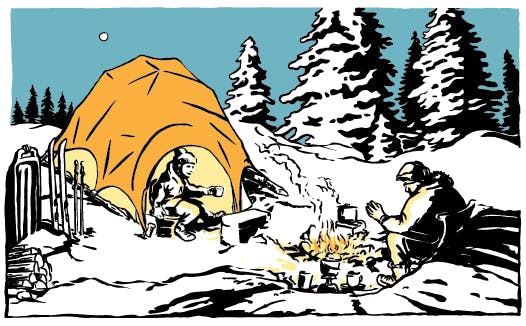
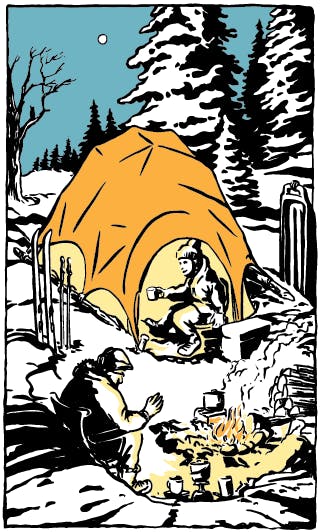
Watson said one of the best ways to transition to winter or cold weather camping is renting a camper cabin, popular and increasingly available at state, regional and county park systems — if you plan ahead. Vermilion-Soudan Mine State Park, northeast of Tower, Minn., for example, just opened eight new spots. People can still get into the elements, warm up or cook by fire, but have the safety valve of getting indoors.
"They're basically like a big wooden tent," said Watson, who wrote a guidebook about the options at state parks and elsewhere, "Best Minnesota Camper Cabins."
Watson has recognized the uptick in newcomers by the topics he's writing about. Some of them are about modifying gear such as, in the case of winter camping, adding a liner to a down or synthetic sleeping bag to add significant warmth, instead of buying a separate $500 down bag. Thompson employs a liner, too. Or filling an extra water bottle with hot water before bed and burying it like a mini furnace inside your sleeping bag near your feet or core for added warmth.
Adapting and starting small — like renting a camper cabin or putting down a tent near home for the first winter camping attempt — are ideas to apply widely.
"Just being outside and knowing what clothing will keep you warm …," Watson said. "Take it in steps, in increments. You be in charge and don't let weather be in charge of you."
Thompson said there is something about the season (shorter days) and setting (colder temperatures, still environment) that focuses attention and can make the winter camping experience singularly special. Whereas warm weather camping might include a long day of hiking or other activity away from the site, winter conditions change the dynamic. Thompson equated it to boating and doing things in a more confined space — "the chores, the needs are close by."
Just setting up camp, chopping wood and building a fire, making a good meal, and embracing a longer, quiet night have their own rewards, she said.
"I have gotten my best nights sleep winter camping," Thompson said. "I swear to it."
Echoing Watson, Thompson said new campers are more prepared than they think. Much of planning starts with perspective.
"It's important to remember we are all built the same, with resilience and self-sufficiency that we don't always tap into," Thompson said, "but to our core we really are meant to be outdoors in every season."
Practical winter camping tips abound. Here are some, including advice from Thompson and Watson:
Plan
• It's simple: Safety first. Always. What's the weather forecast? The terrain?
• Some of the Minnesota's state parks and recreation areas welcome winter campers. The list is online at bit.ly/statewintercmp. Given the impact of COVID-19, check visitor alerts on the parks' individual web pages on the Department of Natural Resources website.
The campsite
• Find a spot out of the wind and away from snow-heavy branches. Also, Watson suggests piling snow around the base of the tent for extra wind-blocking.
• Pack down a tent site with your boots or snowshoes, reducing the moisture on the floor of your tent. Also, condensed snow has better insulating qualities than bare, frozen ground.
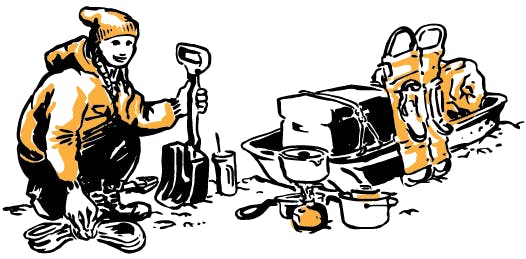
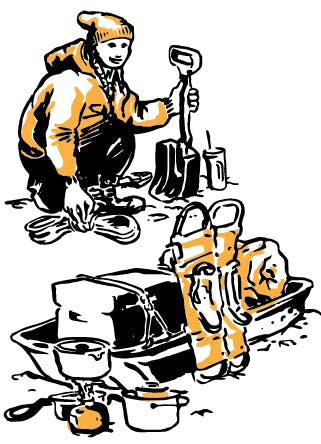
• Get creative with anchoring your tent's lines in frozen conditions. Some employ "deadman" anchors, weighting a line with logs or rocks. Trekking or ski poles or ice stakes are an option.
• Winter already produces spectacular sunrises (and sunsets). Consider a tent site that takes advantage of its warmth, too.
Sleeping
• Bring extra gear, including an extra hat and pair of gloves or mittens, beyond what you'll wear during the day. Thompson, who runs REI's Local Experience outdoors programs, always packs separate, warm sleeping clothes (beanie, socks, polyester or wool layer, etc.) and puts the sack in her sleeping bag, setting her up for a good night's sleep.
• Prepare to pee. You've hydrated well to stay warm, and you'll need to go at night. Seriously, consider a separate and well-marked pee bottle to avoid leaving the tent. There are helpful personal products made for women, too.
• A decent liner (materials vary) can add 10-15 degrees of warmth to a sleeping bag rating. Another option: Doubling-up sleeping bags.
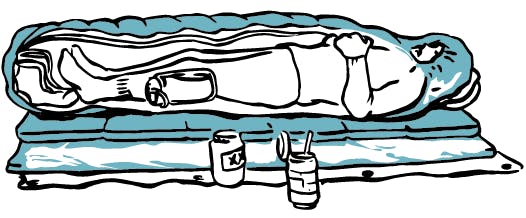
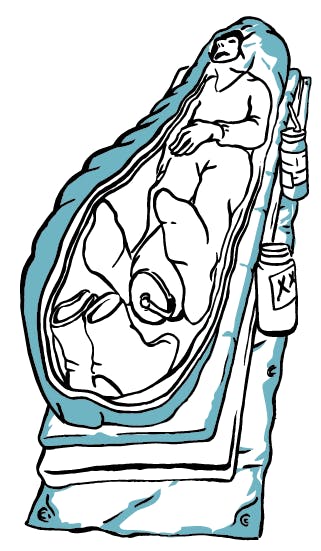
• Save the jolt of cold boots in the morning by removing the liners at bedtime. Tuck them at the bottom of a sleeping bag.
• Just like layering clothing, think layers for sleeping in this order: You'll want two pads under the bag. The insulating qualities of the closed cell pad make it best under the bag, with an air mattress at the base. Closed cell pads are rated by R-value, the higher the number the more insulation. Shoot for 4 or higher in winter. The pads also are great for standing or sitting on, reflective side up to reflect body heat, Thompson said.
• A common tip for extra warmth in a sleeping bag: Fill a Nalgene bottle with hot water and put it at your feet or near your core. Thompson said having it there is a good reminder to drink, too. It's easy to avoid hydrating when the weather is cold, yet hydration is key to regulating body temperature. Drink even if you're not thirsty. Thompson wakes up with a reminder. "I won't leave the bag until I have had 16 ounces of water."
Fire and food
• Bring simplicity and smarts to eating. Soups keep you hydrated, nourished and warmer. Consider a one-pot meal prepared ahead of time that can be reheated, Watson said. And think about meals to match your stoves and pots. Simple instant soups and noodles supplemented with spices and canned meat are a little-fuss route.
• Also, you'll want to eat more than normal in a good balance to keep your metabolism humming and your energy high. Opinions vary, but the general wisdom is half or more calories from carbs (warm cider, energy bars, pasta and grains), with the balance from fats (cheeses and nuts) and protein (jerky, precooked meats worked into meals).
• Eat an energy bar or cheese before bed to keep your system fired up. Or consider a warm drink.
• Cook dinner before it gets dark. Remember, the days are shorter, and you don't want to expand mental and physical energy navigating camp duties in bad light.
• Hydrate, again and again. You need to stay on top of that, which might mean melting clean snow. Boil the water, too, for safety before filling those water bottles. Use a bit of water to help get the melt started.
• To that end, consider setting up your fire for the work of cooking and the work of staying warm, Watson said. If conditions allow, he likes to have a main fire, with a pot of water tucked nearby, and separate coals collected to the side for cooking.
• Use an insulated cooler to keep foods from freezing, Watson said. If possible, bury it in snow to take advantage of natural insulation.
Miscellaneous
• It's important to have backups always, right? Backup clothing, hats, gloves. Apply that same thought to fuel and stoves. You might rely on your stove more than usual, depending on conditions.
• Tools like a sled to haul gear, even on a short trip, and a small shovel will prove invaluable for getting camp started well.
(Additional sources for tips: Health, Physical Education and Recreation Department at the University of Minnesota-Duluth and Audubon Center of the North Woods; REI)
Bob Timmons • 612-673-7899
